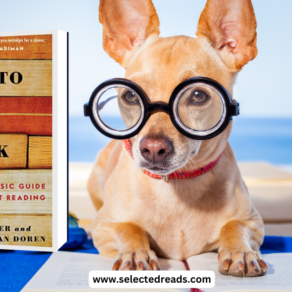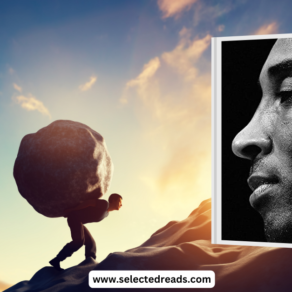Today, we explore “I Am Malala” by Malala Yousafzai and Christina Lamb, a memoir that transcends the mere category of autobiography to become a powerful narrative of resilience, courage, and the unyielding pursuit of education. This post aims to provide an insightful overview of Malala’s extraordinary journey and the profound themes woven throughout her story, all while preserving the essence and impact of her experiences for new readers.
We’ll start with a detailed summary of the memoir, capturing the essence of Malala’s fight for girls’ education under the oppressive regime of the Taliban. Following this, we’ll explore the key figures who play pivotal roles in her life and the development of her activism. Finally, we’ll conclude with a series of engaging book club questions designed to foster deeper discussion and reflection on the themes of courage, the right to education, and the power of one individual’s voice against the backdrop of global challenges.
I am Malala Summary
“I Am Malala: The Girl Who Stood Up for Education and Was Shot by the Taliban” is the memoir of Malala Yousafzai, co-written with Christina Lamb. The story unfolds with Malala’s description of her life in the Swat Valley in Pakistan, a beautiful region known for its rivers, mountains, and the rich cultural heritage of its people. Malala’s narrative begins with a brief history of her country, offering insights into her family’s background and the political and social changes that have shaped Pakistan.
Malala’s father, Ziauddin Yousafzai, is portrayed as a progressive and influential figure in her life. He is an educator who defies traditional norms by advocating for girls’ education, running a school, and encouraging Malala to learn and speak out. Her mother, although less prominently featured, supports her family’s values and Malala’s aspirations.
Photo: Amazon
As Malala grows, she becomes increasingly aware of the changes happening around her, especially after the Taliban begins to exert control over the Swat Valley. The Taliban’s oppressive rule includes banning television, music, and, most crucially for Malala, girls’ education. Despite the dangers, Malala refuses to remain silent. Inspired by her father’s activism, she starts to speak publicly about the right to education, writing a blog for the BBC Urdu service under a pseudonym and giving interviews in print and on television.
The turning point of the memoir occurs on October 9, 2012, when Malala, then fifteen, is shot in the head by a Taliban gunman while on her way home from school. The shooting leaves her critically wounded, and her survival seems uncertain. However, Malala’s story does not end there. She makes a miraculous recovery, thanks in part to the medical treatment she receives first in Pakistan and then in the United Kingdom.
Malala’s journey from her small town in Pakistan to the global stage is both inspiring and extraordinary. After her recovery, she becomes an international symbol of peaceful protest and the youngest nominee ever for the Nobel Peace Prize. Her activism intensifies, leading her to address the United Nations and meet with world leaders. Alongside her personal recovery, Malala’s campaign for girls’ education gains momentum, transcending cultural, geographical, and political barriers.
Related: Anne Frank Diary Summary and Discussion Questions
I am Malala Themes
“I Am Malala: The Girl Who Stood Up for Education and Was Shot by the Taliban” explores several powerful themes, reflecting both the personal journey of Malala and broader social and political issues. Here are some of the key themes in the book:
- The Power of Education: At the heart of Malala’s story is the belief in education as a fundamental right and a force for change. The narrative underscores how education empowers individuals, especially women and girls, to challenge oppressive systems and aspire to greater opportunities.
- Courage and Resilience: Malala’s story is a testament to the human spirit’s resilience in the face of extreme adversity. Despite being targeted and severely wounded by the Taliban, Malala’s determination to fight for her beliefs only grows stronger, showcasing her remarkable courage.
- The Impact of Extremism: The book provides insight into how extremism, particularly that of the Taliban, affects communities, families, and individuals. It highlights the destructive impact of their ideology on education, culture, and freedom, especially for women.
- Women’s Rights and Gender Equality: Malala’s activism is closely tied to the struggle for women’s rights and gender equality. Her story highlights the barriers girls face in accessing education and the broader fight for equal rights in a patriarchal society.
- The Role of Family: Malala’s family, particularly her father, plays a crucial role in shaping her values and activism. The book illustrates how a supportive family environment can empower individuals to stand up for their beliefs and make a difference in the world.
- Identity and Belonging: Malala’s narrative also touches on themes of identity and belonging, exploring what it means to be part of a community, a nation, and the global community. Her journey from the Swat Valley to the international stage challenges and expands her sense of identity.
- The Power of Voice: The book celebrates the power of using one’s voice to effect change. Malala’s story demonstrates how speaking out, despite the risks, can challenge injustices and inspire others worldwide.
- Hope and Optimism: Despite the challenges and dangers Malala faces, her story is imbued with hope and optimism. Her unwavering belief in the possibility of change and the power of education to transform societies is a central theme of the narrative.
- Cultural and Political Context: The book provides a window into the culture and politics of Pakistan, offering readers an understanding of the complex factors that contribute to the rise of the Taliban and the challenges of advocating for change within this context.
- Global Citizenship and Responsibility: Malala’s story transcends national borders, urging readers to consider their role as global citizens in supporting education and equality. Her journey underscores the interconnectedness of our world and the shared responsibility to fight for human rights.
I am Malala Book Club Questions
Here are some thought-provoking questions for your book club discussion:
- Inspiration and Influence: How did Malala’s father influence her views on education and activism? Discuss the role of parental support in shaping Malala’s path and how it contrasts with traditional views in her society.
- The Power of Education: Malala fights for her right to education against formidable odds. Why do you think education was so threatening to the Taliban, and why is it so important for girls and women in particular?
- Voice and Silence: Malala chose to speak out when many were silent. What risks did she face by doing so, and what impact did her voice have locally and globally? Discuss the power of speaking out against injustice.
- Cultural and Political Context: The book provides insight into the culture and politics of Pakistan, particularly the Swat Valley. How did this context shape Malala’s story? Were there any aspects of her cultural background that surprised you or challenged your perceptions?
- The Role of the International Community: After the attack, Malala’s recovery was supported by an international effort, and she became a global figure. Discuss how the international community’s response both helped and complicated her campaign for girls’ education.
- Resilience and Recovery: Malala’s physical and emotional recovery is a significant part of her story. What can we learn from her resilience? How does her personal recovery mirror or differ from the broader fight for education rights?
- Activism and Youth: Malala was a teenager when she became a global advocate for education. Discuss the role of youth in social and political activism. What advantages and challenges do young activists face?
- The Impact of Malala’s Story: How has Malala’s activism influenced the global conversation about education and women’s rights? Can you identify any tangible changes that have resulted from her work?
- Narrative Voice and Storytelling: Consider the narrative style of the book. How does Malala’s voice come through in the storytelling? Discuss how the co-writing process with Christina Lamb might have shaped the narrative.
- Continuing the Fight for Education: Malala’s story is ongoing. What current challenges do girls and women face regarding education around the world, and how can individuals and communities support the fight for education rights?
Related: A Child Called It Summary, Quotes, and Book Club Questions
Final thoughts
In closing, I trust this brief exploration has piqued your interest in “I Am Malala”. This memoir is not only a testament to the indomitable spirit of a young girl but also a rallying cry for the right to education and equality. If this book hasn’t yet made it onto your reading list, I strongly encourage you to consider it. Malala’s narrative is a profound reminder of the power of perseverance, the importance of voice, and the unyielding belief in the possibility of change.









